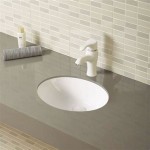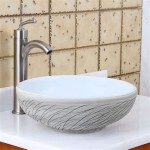The Essential Guide to Cleaning Moldy Bathroom Grout
Mold and mildew are common household problems, especially in humid areas like bathrooms. While they may appear as unsightly stains, these microorganisms can also pose health risks if left untreated. Grout, the material used to fill in the gaps between tiles, is particularly susceptible to mold growth due to its porous nature. Cleaning moldy bathroom grout is crucial for both aesthetic and health reasons. Here's a comprehensive guide to help you effectively tackle this issue:
1. Identify the Type of Mold
Before you begin cleaning, it's important to identify the type of mold you're dealing with. Some common types include black mold, which is known for its dark color and potential health hazards, and pink mold, which is often found in showers. Knowing the specific type of mold will help you choose the most appropriate cleaning solution.
2. Safety Precautions
Mold can be harmful if ingested or inhaled, so it's essential to take safety precautions when cleaning. Wear a mask to prevent inhaling spores, and open windows or use a fan to ensure proper ventilation. Avoid using bleach, as it can release toxic fumes when mixed with certain cleaning agents.
3. Choose a Cleaning Solution
There are several effective cleaning solutions you can use to remove mold from grout. White vinegar is a natural antifungal agent that kills mold and deodorizes. Hydrogen peroxide is another effective option, but it can bleach colored grout. Commercial mold and mildew removers are also available, but read the instructions carefully before using them.
4. Apply the Cleaning Solution
Once you have chosen a cleaning solution, apply it to the moldy grout using a spray bottle, sponge, or brush. Allow the solution to sit for the recommended amount of time, usually 15-30 minutes. This will give it time to penetrate the grout and kill the mold.
5. Scrub the Grout
After the solution has had time to work, use a stiff-bristled brush or toothbrush to scrub the moldy grout. Apply pressure to remove as much mold as possible. Rinse the area thoroughly with water to remove any remaining residue.
6. Dry the Grout
Once the grout has been cleaned, dry it thoroughly with a clean towel or hairdryer. This will prevent the mold from returning. If possible, leave the bathroom door open for a few hours to allow the air to circulate and further dry the area.
7. Prevent Mold Growth
To prevent mold from growing back, it's essential to keep the bathroom clean and dry. Regularly clean the grout and tiles with a mild cleaning solution. Use a squeegee or towel to remove excess water from shower walls and floors after use. Provide adequate ventilation by opening windows or using a fan while showering.
Cleaning moldy bathroom grout can be a straightforward task if done correctly. By following these steps, you can effectively remove mold, prevent its return, and maintain a clean and healthy bathroom.

How To Clean Mold In Shower Grout Tips And Tricks Certified Care

How To Clean Mold In Tile Grout Jdog Carpet Cleaning Floor Care

Black Mold In The Shower How To Clean It Kitchen With Matt

What Is The Best Way To Clean Shower Grout Mold Anita S Housekeeping

How To Clean The Grout Between Your Wall Tiles And Revamp Mouldy Mastic

How To Remove Mold In A Tile Shower

5 Easy Ways To Clean Mold In Shower Grout Naturally Wikihow

How To Clean Grout Cleaning Stains

How Can I Clean Mildew From Grout Puroclean Hq

Black Mold In The Shower Here S How To Remove It Help For You







